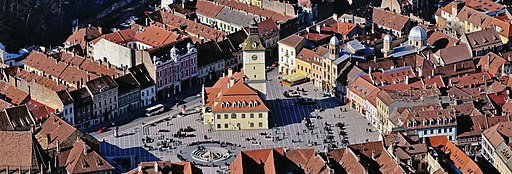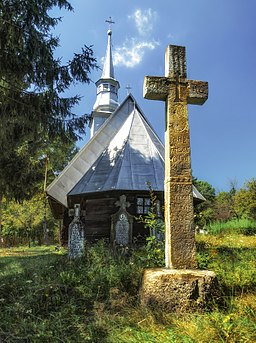The most important and most visible feature in Fedora 18 is going to be the new user interface for the installer, Anaconda. It was a major change and it needed a major fixing effort, which was the cause for repeated schedule changes (the final release will come with an over 2 months delay). Since the Beta version was released earlier this week, anyone can perform an install and experiment the new look and feel. Below is a series of screenshots (click for large size view) captured during my install of the Xfce spin (the steps should be identical for the other spins). I repeat: this is the Beta release.
So I copied the Xfce spin to an USB stick and booted from it to a working device. There is the expected "Install to Hard Drive" icon - that's the case for all "live" spins for a long while.

Traditionally, in the first step you are asked about the language to be used during install:

Then is the pre-release warning in a humorous tone, in the stile of old text-based adventure games. A good thing. Still... I thought is only one month in the future. Do someone know something I don't?

I booted from the USB stick with the purpose of performing an install, so the network wasn't configured. Now the installer asked to set-up the network. A good thing, I may be able to customize the package set, add other repos (Rpmfusion and get done with everything in one go). Only it didn't... it wasn't possible to customize the set and it wasn't possible to add repos. A regression, we used to be able to do that.

Then it goes to the main installer screen, where the redesign can be seen: instead of a "wizard" approach, where you follow the steps in serial order, from one to another, now it is a "hub", from the main page you can go to various config sections, complete them and go back. The section that must be filled are marked with an orange sign, the other are optional. A hub for only 3 options, 2 of which are totally minor (keyboard layout and timezone) is overkill. The future will probably add more, still I am not convinced about the benefits, I still used it as a wizard.
In the looks, there can be noted the extremely simplistic and monochrome, Windows 8 style, icons, which do not look like icons or buttons.

The first option to edit is the time zone selection. From all the install experience it is my favorite part and a good change. In the old Anaconda the widget was small with the need to unintuitively zoom the world map. Now is easier. Still, the position, caption and shape of the "Done" button is not inspired and is a flaw to be found in every similar configuration screen. I have to witness I had to hunt for it, I expected a bigger, more visible button in the bottom-right corner.

The keyboard layout section is the same, very simple (was an entire screen needed?) with the "Done" button in the same unexpected place.

The less pleasant part part was when selecting the proper layout for the Romanian language (still, the problem isn't new). Can you tell which is the right one? It was not my first Fedora install, so I happened to know (hint: it would be a good idea to put the option needed by most users the first, not the last).

The destination selection screen follows the same convention but it is a small wizard in itself, with a "Continue" button in the "right" place. Why do I have to jump to opposite screen corners for buttons?

The "wizard" mode is interrupted by a pop-up where you set some partitioning options. There is also a disabled "Modify software selection" button, hovering it the tooltip says "Please wait... software metadata still loading". No matter how long you wait, the button won't get enabled, you won't customize a thing.

I didn't go in depth with partitioning, just re-used the old partitions from the previous Fedora 17 install.

A very small regression is you having to type by hand the mount point for partitions (of course I want to mount /home in /home and of course if my hand is on the mouse I prefer to select from a drop-down, it used to be that way). The confusing part comes when I set the mount point for a partition and it appears in both F17 and F18 sections... I put it for F18, why still in F17, which I am erasing? If you stop and think, it makes some sense: you can have /home or swap shared by two Linux installs, but only if they have the same user IDs and SE attributes...

Another minor part: that "Unknown" partition is not unknown, is a W I N D O W S partition (GRUB will recognize and use it), why not label it as such here? The old Anaconda did... and this brings me to the bigger complaint: the GRUB setup screen is gone and I need it: my computer at home is going to be shared by two persons, one (me) booting in Linux and the other in Windows. For her, it has to go in Windows by default. Regression. I will have to adjust it by hand post-install.

With this done is the time to begin installation. From a button placed "correctly":

While files are copying, you are asked to set a root password.

In the famous Anaconda way, the progression indicator has a rhythm of its own, unrelated with anything.

When the bar s full the installation ended successfully, there is a button to reboot in the newly installed system.

This was a visual guide of Anaconda, but the install is not ready, you will have one more step: the first run wizard, which is not covered with screenshots. It was 4 additional steps:
- a "welcome" screen, where you just press a button
- a license agreement screen, where you are presented with the text of GPL (at least I believe so, I didn't read it - TL;DR). Again, just press a button
- user setup, a screen where you create the first user of the system. eventually making it an "administrator" (what an administrator is on a Linux system?). This is the only useful step from this wizard, it would make sense to move it elsewhere (Anaconda?) and get rid of the wizar
- time setup, which I already did in the Anaconda interface. Is redundant.
Since the features are supposed to be ready by a Beta release, expect the experience in the Fedora 18 final release not to be far from this.










